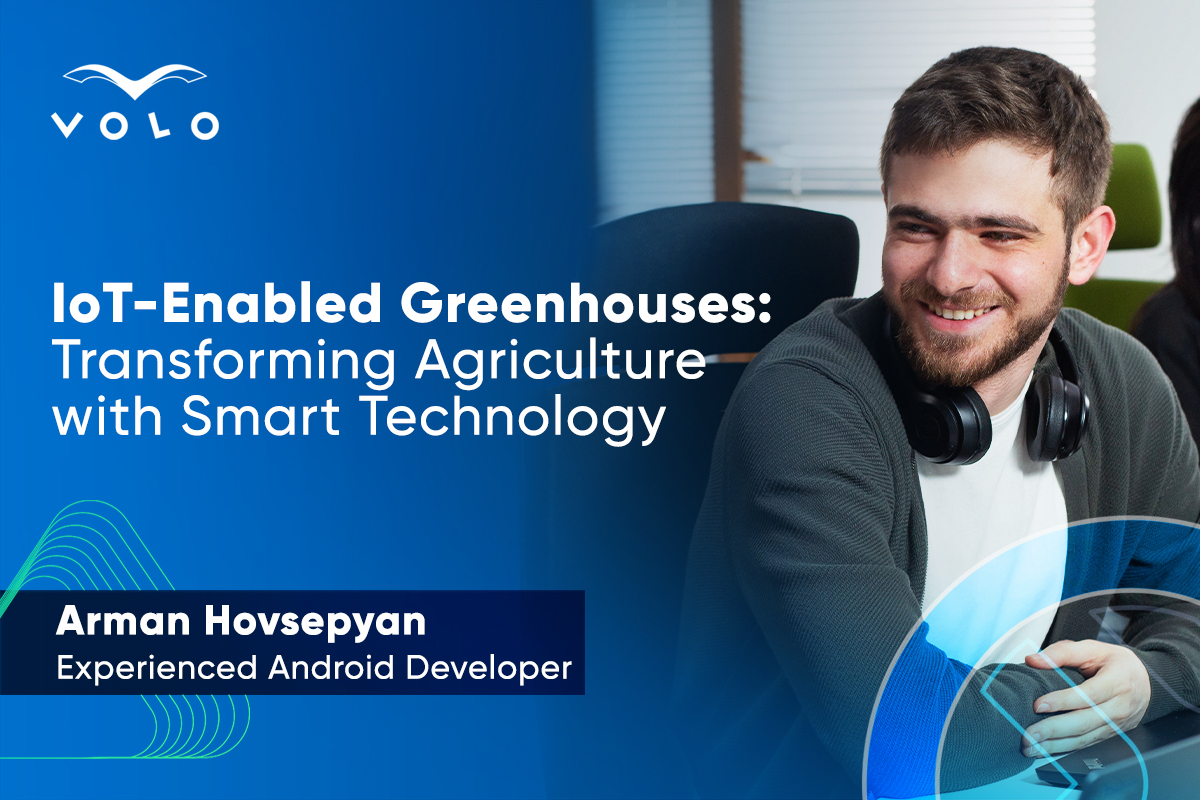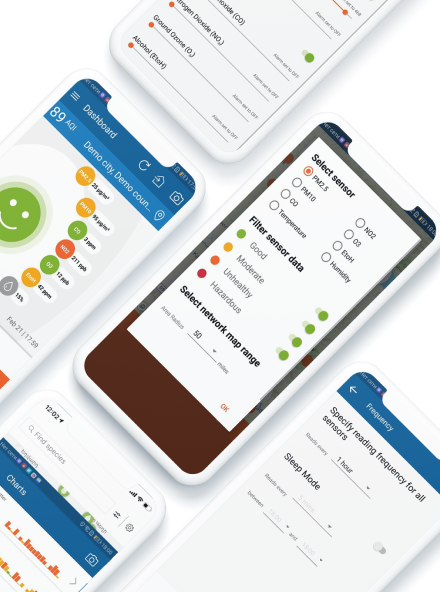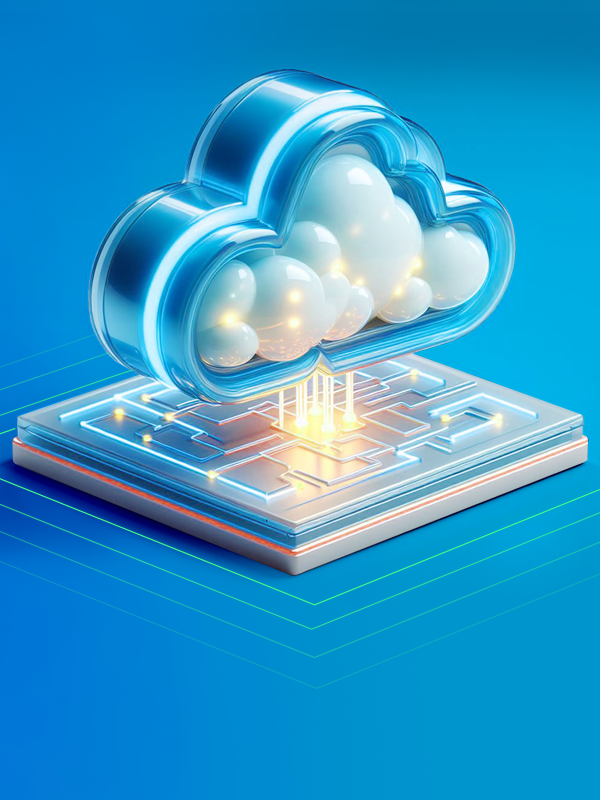
IoT-Enabled Greenhouses: Transforming Agriculture with Smart Technology
4 Oct 2023

In the following article, Arman Hovsepyan, one of our experienced Android developers, explores the role of IoT in greenhouse monitoring and discusses the ways IoT mobile apps can help create a more sustainable future.
In our era, technology has revolutionized virtually every industry, fundamentally altering our way of life and enhancing our overall quality of living. Agriculture, a crucial part of our food production, has also been impacted by this transformation. The need for higher yields, the scarcity of resources, and climate change are a set of constraints on traditional farming practices. In response, technology has advanced, opening a new era of agriculture. IoT-enabled greenhouses stand out among these developments as a key factor in reshaping the agricultural industry's future.
In this article, our focus is on the potential of IoT in revolutionizing greenhouse management. We'll look at how IoT technology continues to transform the way in which we manage greenhouses and outline the various ways it brings innovation and new-found benefits to this critical agricultural sector.
IoT: A Quick Recap
If you want a deeper dive into IoT, you'll find valuable insights in our previous blog posts dedicated to this topic.
IoT in 2023: Fundamentals and Trends
Mobile IoT and Its Impact on Your Business in 2023
In simple terms, IoT or the Internet of Things, is a network that connects various devices and enables online communication and data exchange. These smart sensor-equipped devices work together to collect, share, and analyze data.
The Role of IoT in the Greenhouse Market
The Internet of Things (IoT) introduces a number of benefits that redefine how we care for our crops in agriculture, especially in the context of greenhouse cultivation. Imagine being able to remotely monitor and control environmental elements like temperature, humidity, light, and irrigation using nothing more than a smartphone or a computer. These everyday devices now make it possible to manage even large greenhouses efficiently in the face of difficult circumstances․ It is these advancements, driven by the Internet of Things (IoT), that are changing the culture of greenhouse management.
So, what exactly are the benefits of the IoT-induced technological transformation?
- Precision Farming: IoT-enabled greenhouses offer precise control over environmental conditions, optimizing them for different crops.
- Resource Efficiency: IoT reduces water and energy wastage through smart irrigation and climate control.
- Data-Driven Decisions: The data generated by IoT systems enables data-driven decision-making for better crop management.
- Environmental Sustainability: Reduced reliance on pesticides and efficient resource use contribute to a more sustainable agricultural practice.
- Economic Benefits: Long-term economic benefits, including increased yields and reduced operational costs, make IoT greenhouses financially viable.
- Remote Monitoring: IoT allows for remote monitoring and control, ensuring greenhouse conditions are always optimized.
- Crop Quality: Consistent conditions lead to improved crop quality and standardization.
- Risk Mitigation: Real-time data helps identify and mitigate risks promptly.
- Energy Optimization: Energy consumption is optimized, reducing greenhouse gas emissions.
- Supply Chain Integration: IoT enables seamless integration into the agricultural supply chain.
- Education and Research: IoT-enabled greenhouses serve as educational tools and support research in agriculture.
Having understood the new capabilities offered by IoT in greenhouse management, let's now explore the key concepts and architectural layers in more detail.
IoT in Greenhouse Monitoring: Key Elements
The incorporation of IoT technology in greenhouse management introduces several crucial components that work in harmony to optimize cultivation practices and yield better results. Here are the key elements that form the backbone of IoT-enabled greenhouse systems:
- Sensors and Devices: A network of sensors and devices placed strategically all around the greenhouse forms the basis of IoT-enabled greenhouses. Numerous environmental variables, including temperature, humidity, light intensity, soil moisture, and CO2 levels, are measured by these sensors.
- Data Collection: Real-time data inside the greenhouse is continuously collected by sensors. A central system or cloud platform receives this data and makes it accessible for access and analysis.
- Connectivity: The collected data is sent through the internet to a centralized system. This connectivity enables remote monitoring, control, and analysis from any location with an internet connection.
- Cloud Computing: Cloud-based platforms are frequently used to store and process the data that sensors have collected. This enables effective historical and real-time data storage, analysis, and access.
- Data Analysis: To interpret the gathered data, IoT-enabled greenhouse systems use data analytics tools. Modern algorithms can spot trends, patterns, and anomalies to reveal information about the health and growth of plants.
- Automation and Control: Based on analyzed data and predefined parameters, automated control systems can adjust conditions within the greenhouse. This includes regulating temperature, humidity, irrigation, and ventilation.
- Remote Monitoring and Control: Greenhouse managers and farmers can access real-time data and control systems remotely using internet-connected devices such as smartphones, tablets, or computers.
- Alerts and Notifications: The system can send alerts and notifications to users when conditions deviate from the optimal range or when issues arise, allowing for immediate action.
- Integration with External Data: In addition to internal data, IoT-enabled greenhouses can incorporate external data sources such as weather forecasts and market demand to optimize operations.
- Scalability: IoT systems can be scaled up or down based on the size of the greenhouse and the complexity of the operation, making them adaptable to various agricultural setups.
What Does an IoT App for a Greenhouse Consist Of?
Creating an IoT-enabled greenhouse also involves structured architecture layers. These layers form the greenhouse management system.
- Physical Layer: Deals with the physical components and sensors
- Data Layer: Involves data acquisition, processing, and storage
- Control Layer: Implements control logic and actuators
- User Interface Layer: Provides access, monitoring, and control for users
- Security Layer: Ensures system and data protection
- Integration Layer: Connects with external services and APIs
- Infrastructure Layer: Manages the physical and network infrastructure
In conclusion, the IoT-enabled greenhouse system is a combination of sensors, data collection, connectivity, cloud computing, data analysis, automation, and remote control. These interrelated components come together to form an intelligent ecosystem that optimizes resource use, growing conditions, and greenhouse management overall.
Challenges and Opportunities in Greenhouse Management
As we explore the key concepts of IoT in greenhouse management, it's essential to uncover its pros and cons as well as its future impact on modern farming.
Pros of IoT-Enabled Greenhouses
- Remote Monitoring and Control: IoT-enabled systems allow greenhouse managers to remotely monitor and control environmental conditions, providing flexibility and enabling swift adjustments even from remote locations.
- Resource Optimization: IoT's real-time data insights enable efficient use of resources like water, energy, and fertilizers. This optimization not only reduces costs but also contributes to environmental sustainability.
- Proactive Management: Sensors in IoT-enabled greenhouses detect deviations from optimal conditions in real time. Automated systems can promptly intervene, preventing potential crop losses due to sudden changes or pest attacks.
- Data-Driven Decision Making: The wealth of real-time and historical data provided by IoT systems empowers informed decision-making. Growers can adjust strategies, leading to improved productivity, crop quality, and overall efficiency.
Cons of IoT-Enabled Greenhouses
- Initial Investment: Transitioning to IoT-enabled greenhouse management requires a significant upfront investment in purchasing sensors, devices, networking infrastructure, and technology implementation, which can be a barrier for some operations.
- Technical Complexity: Integrating IoT systems demands technical expertise. Greenhouse staff may need training to set up, calibrate, and troubleshoot the technology effectively, posing challenges for those less familiar with advanced technology.
- Data Security Concerns: IoT involves the exchange of sensitive data over networks, which exposes operations to potential cybersecurity breaches. Ensuring robust data encryption, secure communication channels, and protection against unauthorized access is crucial to prevent data breaches and privacy issues.
Parting Notes
In today's changing world, the demand for IoT-enabled greenhouses is clear. The potential to remotely control, optimize resources, predict trends, and make data-informed decisions sets the stage for a greener, smarter future of agriculture. The journey of IoT in greenhouses may be challenging, but the rewards it promises position it as an essential tool in revolutionizing how we cultivate crops and feed the world.
VOLO team has experience in building IoT solutions for greenhouse management, so if you are thinking about your own IoT enabled greenhouse monitoring application, we are at your service. Our tech specialists will happily answer your questions on this matter and guide you throughout the whole IoT-enablement journey to help you make your greenhouse management processes more efficient and high in yields.



